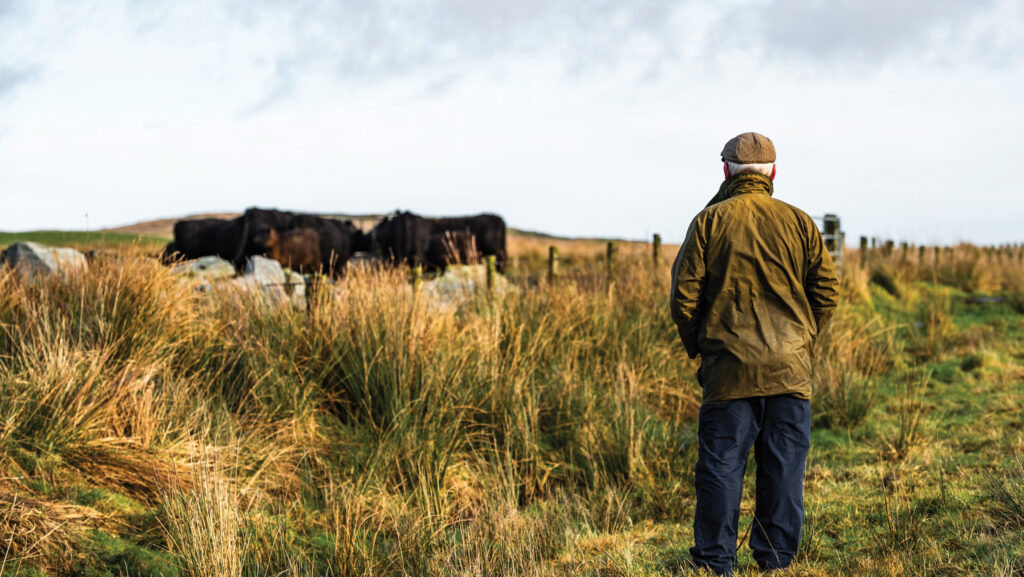Order of IHT relief application key to potential liability
 © iStock Photo
© iStock Photo The potential impact of the Budget’s inheritance tax (IHT) relief cut needs careful calculation, advisers warn.
They stress that every situation is different, highlighting the importance of assessing the potential impact of the measures and ensuring that reliefs, allowances and bands are applied in the correct sequence, as in the tables below.
After clarification from the Treasury, the Country Land and Business Association (CLA) has revised its modelling of the impact of the IHT changes, based on an arable farm in England, and using average asset values.
The original tables were published in the 15 November issue of Farmers Weekly.
See also: What to consider in light of Budget IHT relief cut
The information which HM Treasury published in several places after the Budget gave a confusing picture, says the CLA, pointing out that while the revised methodology gives more advantageous results for farmers and other family businesses, everything is relative.
“In our updated modelling, the tax now starts biting from a higher acreage if the farm is owned by a couple – from roughly 250 acres rather than 200 acres,” says the CLA.
“However, the new modelling offers cold comfort for single owners who cannot split their assets. In our example, even at 100 acres, they would face a tax charge.”
The revised modelling shows that a typical 200-acre arable farm owned by an individual with an expected annual profit of £27,000 would face an IHT liability of £362,000.
Payments can be spread over 10 years but would still demand the equivalent of 134% of the farm’s profit each year to cover the tax bill, forcing many successors to sell 16% of their land or take on debt.
A 250-acre arable farm owned between a couple and with an expected annual profit of £33,660 would have an IHT liability of £70,000, representing 21% of the business’s profit each year over a decade.
Using the same assumptions as in the tables, the CLA’s modelling for a 350-acre farm owned by a couple shows an IHT liability of £461,000, which over 10 years would almost wipe out the expected annual profit of £47,120.
Budget IHT proposal in brief
From April 2026, agricultural property relief and business property relief will be capped at £1m in total for each individual.
Beyond this level, qualifying assets will receive 50% relief from inheritance tax.
This is applied after using an individual’s nil rate band of £325,000 and the residence nil rate band of £175,000, where the latter is available.
A taper reduces the amount of the residence nil-rate band by £1 for every £2 that the net value of the estate is more than £2m.
How farm size affects tax liability on typical arable farms – assets held by one individual |
|||||||||
|
Acreage
|
Land value (£) |
Farmhouse, farm buildings, equipment value (£) |
Total estate value*(£) |
Less £1m APR/BPR allowance (@ 100% relief) (£) |
Less 50% APR/BPR relief (£) |
Less nil rate band (£) |
Less residence nil rate band (£) |
Taxable estate (£) |
IHT liability at 40%(£) |
|
100 |
1.13m |
900,000 |
2.03m |
1m |
515,000 |
325,000 |
160,000 |
30,000 |
12,000 |
|
200 |
2.26m |
1.2m |
3.46m |
1m |
1.23m |
325,000 |
– |
905,000 |
362,000 |
|
250 |
2.825m |
1.35m |
4.175m |
1m |
1.5875 |
325,000 |
– |
1.2625m |
505,000 |
|
500 |
5.65m |
2.1m |
7.75m |
1m |
3.375 |
325,000 |
– |
3.05m |
1.22m |
|
1,000 |
11.3m |
2.6m |
13.9m |
1m |
6.45m |
325,000 |
– |
6.125m |
2.45m |
|
*Average market value for land (£11,300/acre), farmhouse (£600,000), buildings and equipment. No stock, cash, diversified assets or development potential included. Model ignores value of personal effects and other assets including pension pots. Note: A taper reduces the amount of the residence nil-rate band by £1 for every £2 that the net value of the estate is more than £2m. Source: CLA, Ward & Co accountants, Land Family Business |
|||||||||
How farm size affects tax liability on typical arable farms – assets held by a couple |
|||||||||
|
Acreage |
Land value (£) |
Farmhouse, farm buildings, equipment value (£) |
Total estate value* (£) |
Less £1m each APR/BPR allowance (@ 100% relief) (£) |
Less 50% APR/BPR relief (£) |
Less nil rate band (£)
|
Less residence nil rate band (£) |
Taxable estate (£) |
IHT liability at 40% (£) |
|
100 |
1.13m |
900,000 |
2.03m |
2m |
15,000 |
650,000 |
350,000 |
– |
– |
|
200 |
2.26m |
1.2m |
3.46m |
2m |
730,000 |
650,000 |
350,000 |
– |
– |
|
250 |
2.825m |
1.35m |
4.175m |
2m |
1.0875m |
650,000 |
262,500 |
175,000 |
70,000 |
|
500 |
5.65m |
2.1m |
7.75m |
2m |
2.875m |
650,000 |
– |
2.25m |
890,000 |
|
1,000 |
11.3m |
2.6m |
13.9m |
2m |
5.95m |
650,000 |
– |
5.3m |
2.12m |
|
*Average market value for land (£11,300/acre), farmhouse (£600,000), buildings and equipment. No stock, cash, diversified assets or development potential included, model ignores value of personal effects and other assets including pension pots. Model assumes two NRBs are available. NB A taper reduces the amount of the residence nil-rate band by £1 for every £2 that the net value of the estate is more than £2m. Source: CLA, Ward & Co accountants, Land Family Business |
|||||||||
